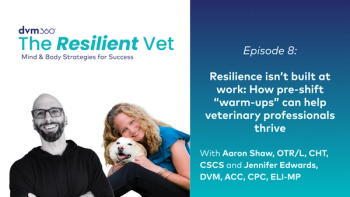
New research aids in understanding of the canine life expectancy
Investigators from the UK’s Royal Veterinary College are helping pet owners predict how long their dogs’ may live.
New research from the Royal Veterinary College’s (RVC) Veterinary Companion Animal Surveillance System (VetCompass) in the United Kingdom is enabling pet owners to predict the remaining life expectancy of their dog from different ages.1 Investigators have also identified life expectancy differences between breeds that were included in the study.2
Using analysis from a random sample of 30,563 dogs that died between January 1, 2016, and July 31, 2020, from 18 different breeds and crossbreeds, the results revealed the overall average life expectancy at age 0 for UK companion dogs was 11.2 years. Conducted in collaboration with researchers from the National Taiwan University (NTU) in Taiwan, the study identified Jack Russell terriers as the breed with the greatest life expectancy from age 0 at 12.7 years, followed by border collies (12.1 years), and springer spaniels (11.92 years).1
Amongst the UK’s kennel club breed groups, Terrier had the longest life expectancy at age 0 at 12.0 years, followed by Gundog (11.7 years), Pastoral (11.2 years), Hound (10.7 years), Toy (10.7 years), and Utility (10.1 years).2
Comparatively, 4 flat-faced breeds were found to have the shortest life expectancy with French bulldogs only expected to live 4.5 years from age 0, followed by English bulldogs at 7.4 years, pugs at 7.7 years and American bulldogs 7.8 years.1
The flat-faced (brachycephalic) breeds identified as having the shortest life expectancies are heavily associated with several life-limiting disorders such as breathing problems, spinal disease, and dystocia. Given that breeds with shorter lives many have generally lower health, the life expectancy information in this new study can also promote a greater consideration of a dog’s expected quality of life by potential dog owners when deciding which breed to purchase.1
Justine Shotton, MSc (wild animal health), BVSc, president, British Veterinary Association, noted that the finding of lower life expectancy for flat-faced breeds is concerning. “[Although] the study doesn’t prove a direct link between these breeds’ potential welfare issues and shorter length of life, the findings serve as a fresh reminder for prospective dog owners to choose a breed based on health, not looks,” said Shotton, in a press release.1
The study also found the average life expectancy at age 0 for male dogs is 11.1 years, which is 4 months shorter than female dogs. Additionally, neutered dogs were found to have a longer life expectancy at age 0 in comparison to their non-neutered counterparts—females: 11.98 vs. 10.50, and males: 11.49 vs. 10.58, respectively.1,2
“As a vet in practice, I am often asked questions about the average lifespan of my patients. To have this data now available, and based on evidence rather than anecdote, provides a direct and immediate benefit to those working in the clinic. Additionally, this will inform future research and provide useful insights for the wider allied professions,” said Sheldon Middleton, MA, VetMB, president of the British Small Animal Veterinary Association, in a press release.1
Previously, life expectancy was crudely estimated using only the average age of death of dogs overall or for a particular breed. However, using “life tables”—tools that list the remaining life expectancy and probability of death across a range of age groups in any given population—allows owners to accurately estimate the remaining average life expectancy. Although life expectancy decreases with age as would be expected, remaining life expectancy does not follow a linear decline with age and therefore life tables provide more accurate estimations.1
Although commonly used for humans, life tables are a novel concept for dogs because access to large-scale population information wasn’t readily available before the VetCompass program was launched, according to the RVC.1
“Dogs have helped many humans to get through the loneliness and isolation of the COVID pandemic. These new VetCompass life tables enable owners to now estimate how long more that they can benefit from these dogs. The short life expectancies for flat-faced breeds such as French Bulldogs shown by the VetCompass life tables supports the UK Brachycephalic Working Group’s call for all owners to stop and think before buying a flat-faced dog,” said Dan O’Neill, MVB MRCVS, PhD, BSc, MScVetEpi, associate professor in companion animal epidemiology at the RVC and co-author of the paper, in an organizational press release.1
These life tables have the potential to drastically improve dog welfare by helping inform treatment plans and end of life decisions. This also can benefit potential dog owners, particularly those looking to adopt, by helping them estimate the remaining length of ownership commitment and potential medical care needs of different breeds and differently aged dogs.1
This study was supported by an award from the Kennel Club Charitable Trust, Agria Pet Insurance and NTU-Yonglin Humane Project. The publication of this research also marks a milestone for the RVC’s VetCompass, which has now published 100 academic papers on a range of topics aimed at improving companion animal health.1
References
- Teng KT, Brodbelt DC, Pegram C, Church DB, O’Neill DG. Life tables of annual life expectancy and mortality for companion dogs in the United Kingdom. Sci Rep 2022; 12;6415.
https://doi.org/10.1038/s41598-022-10341-6 - New RVC research helps owners better understand the remaining life expectancy of dogs. News release. Royal Veterinary College. April 28, 2022. Accessed May 4, 2022.
https://www.rvc.ac.uk/vetcompass/news/new-rvc-research-helps-owners-better-understand-the-remaining-life-expectancy-of-dogs?fbclid=IwAR3j4tVvH2eZdUMMqyQuE59rvfQax4zL_BkVk1IW85J9Hvct3o6WjYlYB8E
Newsletter
From exam room tips to practice management insights, get trusted veterinary news delivered straight to your inbox—subscribe to dvm360.




